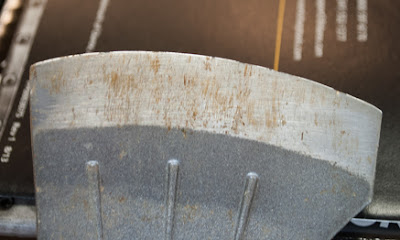Boker knives are some of the hidden gems in the knife
market. Mostly because they don’t have
the advertisement clout others do. But
smart thinkers and cagey knife users should be thinking about the Boker brand.
Boker traces its roots to tool manufacturing the 1800s in
Germany. Swords were the name of the
game, but they diversified into other edged products. The family owned company sent representatives
to America and opened up manufacturing in America. They both shared the “Tree Brand“ logo.
During the Second World War the Solingen plant was destroyed
and Boker USA took control of the trademark.
In the 1950s the German factory was rebuilt. Over the years the American company
closed. The German company changed hands
but in 1986 Boker reacquired the rights to the American brand and established
facilities in Denver, Colorado.
Boker has manufacturing
in Germany (of course!), Argentina, Taiwan and China and now in the
USA. They produce three basic levels
depending on the price point: Boker, Magnum and Boker Plus.
I once did a special order of a special knife to commemorate
the customer’s son-in-law’s military promotion.
It was a beautiful Damascus bladed folder. The blade was carved from 300-fold forged
Damascus steel from the barrel of a German Leopard 1 tank.
The knife came in a nice wood presentation box with the
instruction and history in German. The
buyer was very happy, as his son-in-law spoke German for the Army. I have a friend who spoke German for the Army;
he was a spy. I didn’t ask any more
questions.
So if your introduction and thoughts about Boker are from
the Magnum $7 knife pile, think again.
 |
| Boker's switchblade |
I just got my hands on the Boker Mini Kalashnikov auto. I’m very impressed. Here’s the stats:
Blade: drop point
Steel: AUS8
Blade Length: 2.5
inches
Handle length: 3.5
inches
Weight: 2.1 ounces
Handle: reinforced
nylon
Country of origin: Taiwan
The Boker website claims the handle is aluminum but they
also claim the blade is wood. Hummm,
someone’s website has been hacked.
 |
| Clip side |
The blade shows the same powerful spring action I’ve seen in
Benchmade autos. Block the blade from
completely opening and when the obstacle is removed, the spring still has
enough force to finish the opening and lock the blade in place. The pocket clip is reversible and the handle
sports a lanyard hole.
 |
| The finger grooves really provide a grip so you can concentrate on using the knife and not holding the knife |
The finger scallops fit my hand pretty good for a small
knife. And between the scallops and the
jimping on the blades spine and handle you get a very good grip. The blade release is a basic plunge lock
system. This system has been used for
many years and is very dependable if you keep it clean. But isn’t that true of all machinery?
 |
| The open back allows for easy cleanup and makes oiling the spring much simpler. |
I suspect it uses a coil spring and the knife has Torx
screws so you can replace the spring if necessary.
I have come to like auto more and more. I don’t suspect they open any significantly faster
than the assisted or many of the tactical knives. But I do think pushing a button is a
gross motor skill and doesn’t require the fine motor skills which are lost
under the influence of fight/freeze/flee conditions.
I wish I could take it for a drive, but it isn’t mine. I have no doubt it would serve me well.
It retails for about $55 but you can get it for less if you shop
around. I’ve got two for sale, but
that’s another story.




